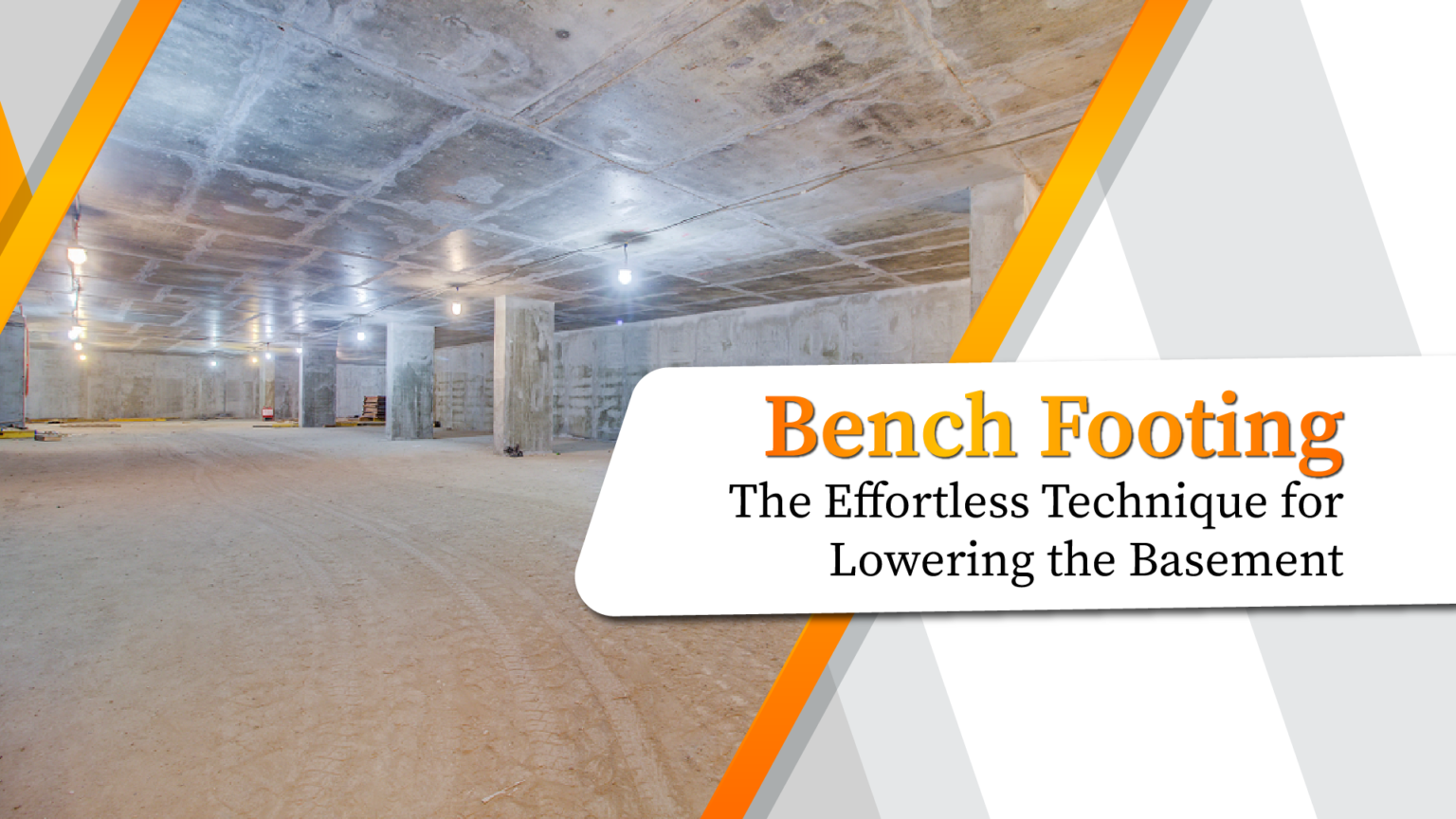In order to produce an additional space in homes, people are turning to the alternative of lowering the basement. And, bench footing is among the extensively used techniques for it.
What is Bench Footing?
Bench footing is a process through which you can lower the basement and provide extra structural assistance to the foundation. There is no need to dig under the structure in order to provide extra height to the basement. Rather, with bench footing, you can reduce the basement floor level and expand the structure of the foundation.
How is Bench Footing done?
A general contractor designs and develops a border around the inside of the basement walls.
He will collect to the preferred depth around structure. After completing the digging procedure, he will build brand-new footings that extend much deeper than the depth of the brand-new floor.
Once the brand-new walls extend upward to the original basement depth, he will cover it with concrete. The completed result will be as if the house has a concrete bench extending along the foundation wall once we have foundation repair permit in Washington DC. Thus, it gives a ‘benching result’ and an additional assistance to the foundation.
What are the Advantages of using the Bench Footing Method?
- It is less time consuming.
- It is cheaper than underpinning.
- Bench footing makes no changes to the existing structure walls.
- It includes less excavation work.
- Bench footing is a feasible choice if your house has a typical wall and the next-door neighbor does not consent you to dig under the foundation.
- You can utilize the recently created ‘bench result’ as a display screen area and make the space appealing.
- It includes a high-end appeal to the basement, making it eye capturing for guests or possible renters.
What are Disadvantages of the Bench Footing Strategy?
- The strategy is called a ‘thief of space’ due to the fact that it lowers the square video footage area of the basement. Likewise, it leaves you with minimal options for using the bench structure successfully.
- It might not contribute to the market worth of your home.
- It does not include repairing any cracks in the existing structure. If you want the general contractor to fix the fractures, you might need to pay additional money for it.
What Safety measures are needed prior to beginning the Process of Bench Footing?
Examine initial aspects such as the following:- The soil on which your house is built
- The needed depth of the area
- Planned use of the basement
- Maintenance cost in the long run
Work with a specialist such as a structural engineer. Get him to examine the whole location, even the outer walls of your home to know whether bench footing is the very best matched technique for your house. Ask the engineer to check the basic design of your house and think about factors such as the level of sanitary drain connection.
Typically, underpinning the basement requires a Basement Underpinning drawings and permit in Washington DC from the Municipality of DC, so make certain you get one before starting the procedure. Do not forget to clear the basement of all the furnishings or storage products. Not all houses can endure the procedure of bench footing.
So, it is essential to comprehend the structure of your house prior to you begin any work in the basement. Remember that bench footing is an uncomplicated technique for underpinning the basement. But, if it is carried out in an inaccurate way, it might trigger harm to your home in the future.

